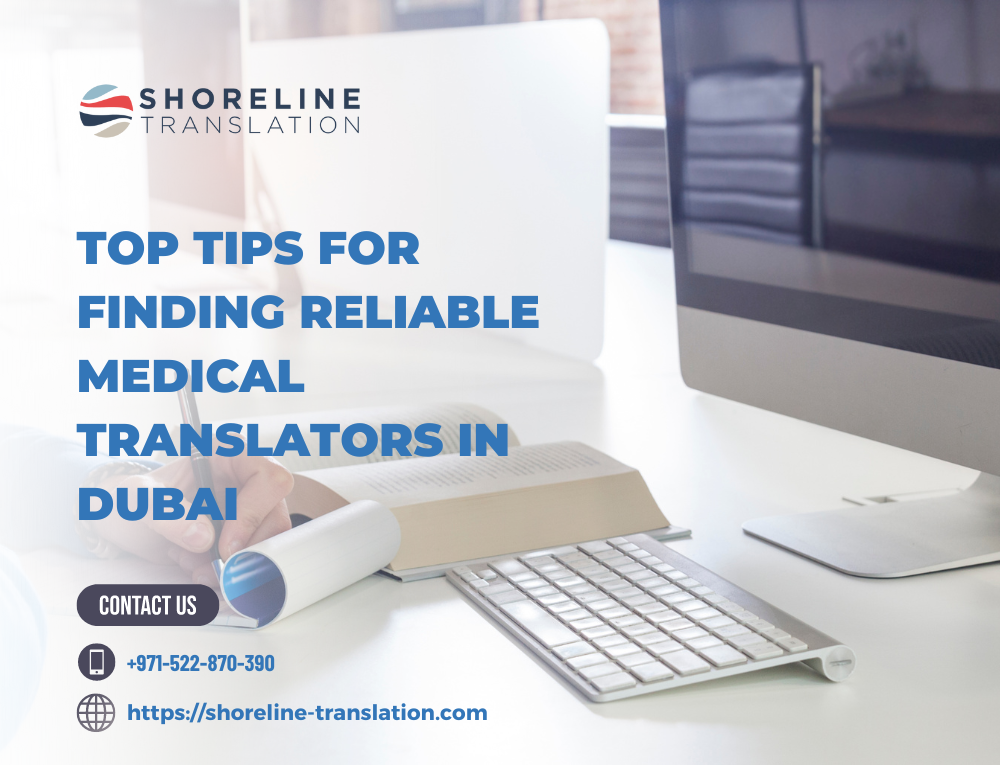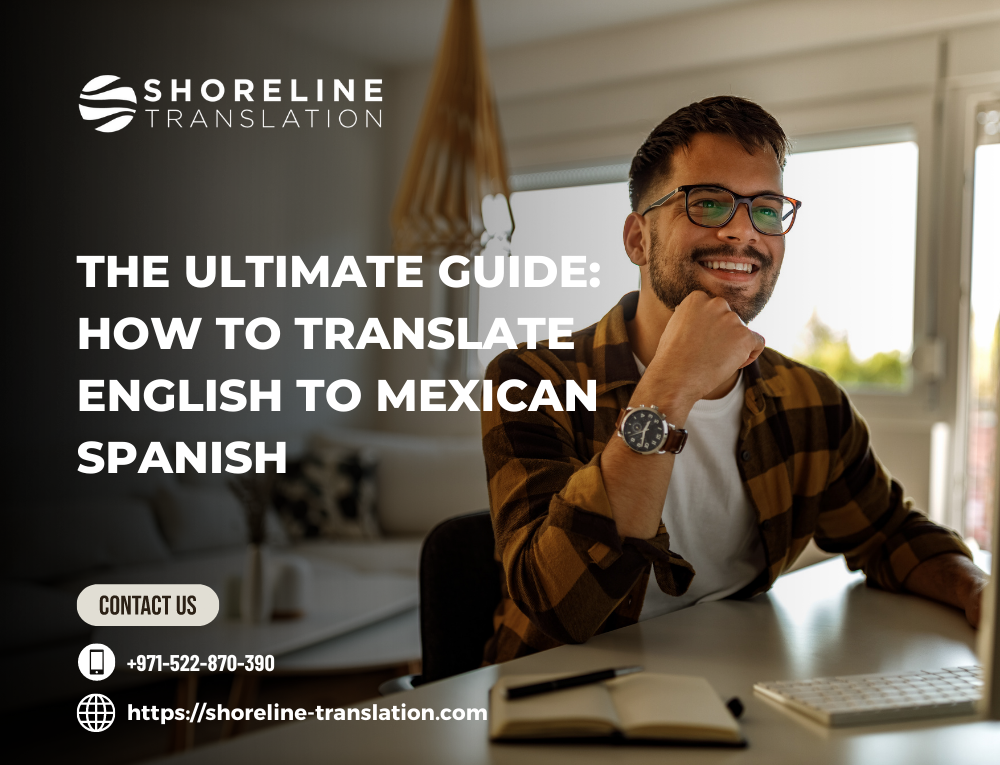Table of Contents
ToggleHow to Get Certified Translations Accepted at a Notary Public Office: A Step-by-Step Guide
In today’s globalized world, official documents often need to be translated for legal, academic, or professional purposes. Whether you’re applying for immigration, enrolling in a foreign university, or handling legal affairs abroad, having your documents translated accurately and accepted by a notary public office is crucial.
However, many individuals face challenges when it comes to ensuring their certified translations meet the strict requirements of notarial authorities.
This comprehensive guide will walk you through the entire process of getting your certified translations accepted at a notary public office, with expert insights from Shoreline Translation Company, a leader in professional translation services.

Why Certified Translations Are Required
Before diving into the process, it’s essential to understand why certified translations are necessary. Legal and official documents—such as birth certificates, marriage licenses, academic transcripts, and legal contracts—must be translated with precision and authenticity.
A certified translation guarantees that the translation is complete, accurate, and performed by a qualified professional.
Common Scenarios Requiring Certified Translations
- Immigration applications
- University admissions abroad
- International business contracts
- Court proceedings
- Visa and passport applications
- Real estate transactions overseas
In all these cases, the translated documents must be accepted by a notary public office, which acts as a legal authority verifying the authenticity of the documents and the translation.
Understanding the Role of a Notary Public Office
A notary public office is a government-authorized entity that verifies and authenticates documents. When it comes to translations, the notary does not verify the accuracy of the translation itself but rather certifies the identity and qualifications of the translator or the translation agency.
Key Responsibilities of a Notary Public:
- Verifying the identity of the translator or representative
- Confirming the translator’s credentials
- Attesting that the translation is a true and accurate representation of the original document
- Providing an official notarial seal and signature
Step-by-Step Guide to Getting Certified Translations Accepted
Step 1: Choose a Reputable Translation Company
The first and most critical step is selecting a certified and experienced translation provider. Shoreline Translation Company is a trusted name in the industry, offering high-quality, notarized translations for a wide range of documents.
They specialize in legal, academic, medical, and technical translations with guaranteed acceptance at notary public offices worldwide.
What to Look for in a Translation Provider:
- Certified translators with legal translation experience
- Membership in professional organizations (e.g., ATA, NAATI)
- Proven track record with notarized translations
- Transparent pricing and turnaround times
- Multilingual support
Step 2: Submit Your Original Documents
Once you’ve chosen your provider, submit clear, legible copies of your original documents. These can often be scanned and uploaded securely through the provider’s website.
Step 3: Request a Certified Translation
Make sure to specify that you need a certified translation for submission to a notary public office. This ensures the translation will include:
- A signed statement by the translator or agency attesting to the accuracy of the translation
- The translator’s credentials
- A declaration that the translation is complete and true
Step 4: Notarization of the Translation
After the translation is completed, the translator or a representative from the translation company will appear before a notary public to swear an affidavit. The notary will then:
- Verify the identity of the translator
- Confirm the authenticity of the certification statement
- Affix a notarial seal and signature
This notarized document is now legally recognized and can be submitted to the relevant authorities.
Step 5: Submit to the Appropriate Authority
Once notarized, your certified translation is ready to be submitted to the requesting institution, whether it’s an immigration office, university, or court. Always check the specific submission requirements of the institution before proceeding.
Key Considerations Before Visiting a Notary Public Office for Certified Translations
Before presenting your documents to a notary public office, it’s essential to ensure every element of your certified translation meets official standards. Below are critical factors to consider that will streamline the process and prevent costly delays:
- Verify the Translation Format
Ensure your certified translation mirrors the layout of the original document. This includes headers, seals, signatures, and formatting, which are often scrutinized by notary public officials for authenticity. - Include a Signed Certification Statement
A valid certified translation must include a signed statement from the translator or agency declaring the translation is complete and accurate. This declaration is a prerequisite for acceptance at any notary public office. - Use a Recognized Translation Agency
Opt for a reputable provider like Shoreline Translation Company, which is known for delivering translations that consistently meet the requirements of notary public offices worldwide. - Ensure Translator Credentials Are Included
The translator’s qualifications, including certifications and professional affiliations (e.g., ATA membership), should be attached to the certified translation to reinforce its validity. - Check Language Pair Accuracy
Notary public offices often require that the certified translation be done by a linguist fluent in both the source and target languages. Shoreline ensures native-level proficiency for all language pairs. - Confirm the Notary’s Jurisdiction
Not all notaries are authorized to notarize translations. Make sure the notary public office you choose is legally permitted to notarize certified translations in your jurisdiction. - Avoid Handwritten Annotations
Any handwritten notes or edits on the translated document can lead to rejection. Certified translations must be professionally formatted and free from manual alterations. - Attach Original and Translated Documents Together
Always submit the certified translation along with a copy of the original document. Notary public offices require both for cross-verification before notarization. - Request a Hard Copy with Notarial Seal
Digital versions may not be accepted by all institutions. Shoreline provides notarized hard copies with official seals, ensuring compliance with notary public office standards.
Compliance Tips for Certified Translations at Notary Public Offices
To guarantee your certified translation is accepted without issue, follow these compliance-focused tips tailored for notary public office submissions. These best practices are based on real-world experience and legal translation standards:
- Use a Translator with Legal Expertise
Legal terminology must be translated with absolute precision. Shoreline employs certified legal translators who understand the nuances required for documents submitted to notary public offices. - Ensure Translation Is Free of Errors
Even minor spelling or grammatical mistakes can result in rejection. Shoreline’s multi-tiered quality assurance process ensures every certified translation is meticulously reviewed before notarization. - Include a Notarization Request Letter (if needed)
Some notary public offices require a formal request letter explaining the purpose of the notarization. Shoreline can assist in drafting this letter as part of their comprehensive service. - Understand Regional Requirements
Regulations vary by country and state. Shoreline’s global network ensures your certified translation complies with the local requirements of the notary public office in your region. - Be Prepared with Valid Identification
When attending a notary public office in person, bring valid government-issued ID. This is necessary for the notary to authenticate the identity of the translator or agency representative. - Avoid Using Machine Translation Tools
Translations generated by AI or free tools are not accepted by notary public offices. Certified translations must be human-produced and verified for legal accuracy. - Keep Copies for Your Records
Always retain a copy of the certified translation and the notarized version. Shoreline provides digital and physical copies for your convenience and future use. - Ask for Apostille Services if Required
If your certified translation is being submitted abroad, you may need an apostille. Shoreline offers apostille services to ensure international acceptance of your notarized documents. - Track Submission Deadlines
Some institutions have strict timelines for submitting certified translations. Shoreline guarantees fast turnaround times to help you meet critical deadlines without compromising quality.
By following these expert tips and working with a trusted provider like Shoreline Translation Company, you can ensure your certified translations are fully compliant and readily accepted at any notary public office.
Common Mistakes to Avoid
Avoiding these pitfalls can save you time, money, and frustration:
- Submitting incomplete or illegible documents
- Using unqualified translators or free online tools
- Failing to request notarization when required
- Not verifying the notary’s credentials
- Ignoring submission guidelines of the receiving institution
Expanding your business to the UAE? Uncover how MOFA attestation can make or break your setup process—and why legal translation is the key to compliance and success. Dive into the full article now!
Shoreline: Your Trusted Partner for Certified Translations
When it comes to certified legal translations, precision, professionalism, and punctuality are non-negotiable. Shoreline Translation Company offers world-class translation services tailored to meet the stringent requirements of notary public offices across the globe.
With a team of certified translators, legal experts, and multilingual professionals, Shoreline guarantees:
- 100% acceptance rate at notarial offices
- Fast turnaround times
- Competitive pricing
- Multilingual support in over 100 languages
- Secure and confidential document handling
Whether you need a single document translated or a portfolio of legal papers, Shoreline is your go-to partner for certified, notarized translations.
Ready to get started? Visit Shoreline Translation Company today and request a free quote. Let the experts handle your translation needs with confidence and care.
Frequently Asked Questions (FAQs)
1. What is the difference between a certified and a notarized translation?
A certified translation includes a signed statement from the translator or translation agency attesting to the accuracy of the translation. A notarized translation goes a step further by having that certification notarized by a notary public office, verifying the identity of the translator.
2. Can I translate my own documents and get them notarized?
No. Most notary public offices require that the translation be completed by a professional translator or certified agency like Shoreline Translation Company. Self-translations are typically not accepted for legal or official purposes.
3. How long does it take to get a certified translation notarized?
The timeline varies depending on the document and language, but Shoreline offers expedited services. Typically, the process takes 1–3 business days, including notarization.
4. What types of documents require notarized translations?
Documents commonly requiring notarized translations include:
- Birth and marriage certificates
- Academic transcripts and diplomas
- Legal contracts and affidavits
- Immigration papers
- Court documents
5. Will my notarized translation be accepted internationally?
Yes, if done by a reputable provider like Shoreline, notarized translations are widely accepted by government agencies, universities, and courts around the world. However, some countries may require additional legalization such as an apostille.
Final Thoughts
Getting your certified translations accepted at a notary public office doesn’t have to be a daunting process. With the right guidance and a trusted partner like Shoreline Translation Company, you can ensure your documents are translated accurately, certified professionally, and notarized efficiently.
Whether you’re navigating immigration paperwork, academic admissions, or legal proceedings, certified translations are a vital part of your journey. Don’t leave it to chance—choose Shoreline for peace of mind and professional excellence.
Visit Shoreline Translation Company now and experience seamless, certified translation services trusted by thousands worldwide. Let Shoreline help you cross borders with confidence.





